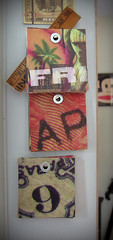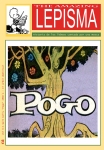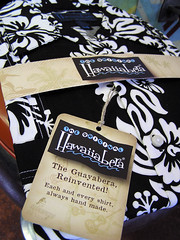The Big Gulp
NASA pisses away millions hauling H2O into orbit. But there's a better way - recycle astronaut urine. Just one question: How does it taste?
By Tom McNichol
People head to Reno for all sorts of reasons. Some want to gamble. Others are looking for a hasty wedding or quickie divorce. I've come to the Biggest Little City in the World to drink my own pee. Not straight up, of course. First, I'll run it through a new NASA water purification system that collects astronaut sweat, moisture from respiration, drain water, and urine - and turns it all into drinking water.
NASA desperately needs this technology. Water makes for a heavy - and expensive - payload. Over the past five years, the agency has spent $60 million delivering potable water to the International Space Station on the space shuttle (6 tons at a cost of about $40,000 per gallon). Deploying the Water Recovery System on the ISS will cut the volume of water hauled into space by two-thirds and free up enough room on the shuttle for four more astronauts.
I'm in Reno because this is the home of Water Security, a new company that is finding ways to use the NASA technology in extreme environments here on Earth. Company president Ray Doane can't wait to show me his magic box. "This is whiz-bang technology," he boasts, with an emphasis on the whiz.
Water Security has added a special filter to the NASA unit, creating a system that can scrub away 99.9 percent of all waterborne viruses, which could prove particularly useful in the developing world. The United Nations estimates that more than 1 billion people lack access to safe drinking water and that 10 million die each year as a result of contaminated water supplies and inadequate sanitation.
The six-stage system starts with a prefilter that removes large particles of sediment and debris, such as hair or lint, from contaminated liquid. Next, a carbon filter strips out the organic waste products contained in urine, like urea, uric acid, and creatinine, as well as pesticides and herbicides, which frequently leech into water supplies from farmland. The liquid then flushes through a cartridge developed by Water Security that contains tiny black beads of iodinated resins. Any microorganisms collide with the beads, which release iodine to kill the bugs.
"The iodine is released gradually into the water and is very stable over a wide range of temperatures and pHs," company vice president Ken Kearney says. "It's very predictable, and that's what you want in space. It can also take some of the dirtiest, nastiest water on the planet and produce clean, safe drinking water."
The water lingers briefly in a holding tank to give the iodine enough contact time for a complete kill. Next, a resin filter strips out the iodine, along with nitrates and heavy metals. Finally, the water moves through a filter that eliminates cryptosporidium (a waterborne parasite that's resistant to iodine) and provides a final "polish" for good taste.
At least that's what they tell me. A Water Security system is set up here at company headquarters, ready to be put to my own uric acid test. A big yellow bucket next to the unit is filled with water and then tainted with "Arizona dust," a common contaminant used by laboratories. I discreetly retire to a side office and emerge clutching a warm plastic cup. I pour the urine into the yellow bucket, taking care not to splash. The chemist stirs the brew with a long stick.
Human waste has bedeviled NASA engineers from the get-go. Alan Shepherd's first 15-minute suborbital flight was so short that no one thought to install a urine receptacle in his space suit. At T-minus 15 minutes, an electrical problem caused an 86-minute delay on the launchpad. Shepherd's bladder soon reached the bursting point, and he radioed the first-ever "Houston, we have a problem" message. After some deliberation, mission control had an answer: "Do it in the suit."
Gemini and Apollo astronauts wore plastic bags taped to their buttocks. After defecation, the crew member was required to seal the bag and knead it, mixing in a liquid-bactericide to provide the desired degree of "feces stabilization." The first men to walk on the moon stepped onto the lunar surface wearing astrodiapers - undershorts layered with absorbent material. Which may explain all the jumping up and down.
As a 1975 NASA study put it, "In general, the Apollo waste management system worked satisfactorily from an engineering standpoint. From the point of view of crew acceptance, however, the system must be given poor marks." For the space shuttle, the agency designed a $23 million toilet that freeze-dries solid waste so it can be transported back to Earth. Until recently, the gray water was dumped overboard, becoming an orbiting monument to mankind.
The water filtration system allows NASA to solve two problems at once. It eliminates the gray water disposal issue and recycles urine into drinking water for the astronauts. The agency is testing the system at the Marshall Space Flight Center in Huntsville, Alabama - where employees run on treadmills as their sweat, respiratory moisture, and urine are collected, cleansed and consumed.
Water Security has already begun putting the technology to work in areas where freshwater is in short supply. This summer, global relief agency Concern for Kids deployed a foot-powered purification unit in northern Iraq. Robert and Roni Anderson, Concern's founders, loaded it onto the back of a Toyota pickup and drove to dozens of villages to purify their groundwater. The unit pumps out 5 gallons per minute, and a single day of purification can sustain a village of 5,000 people for a month. The cost is about 3 cents a gallon. Iraqi water companies, by comparison, charge $4 a gallon.
It's not just war-torn regions that are short on potable water. After the tsunami hit Indonesia last December, much of the freshwater supply became contaminated with salt water and toxic street runoff. Kearney says the Water Security system is perfectly capable of working in such natural-disaster scenarios. After all, the technology was originally tested on an open sewage ditch in Jakarta and produced water that met Environmental Protection Agency standards.
Back at Water Security HQ, the contents of the bucket get a final stir, and the experiment begins. The water is sucked through an intake hose and into the purification system - prefilter, carbon filter, iodinated resin, disinfectant holding tank, iodine scrub, and a polish. (Don't be shy with the polish, guys.)
After 30 seconds, water dribbles out of a nozzle and into a plastic cup. I raise it with a trembling hand. A toast to Alan Shepherd and all the brave astronauts who endured the wrong stuff in their space suits for the advancement of science: This number one's for you. I take a big astronaut gulp, lower the cup, and wait for the noxious aftertaste. Nothing.
The water tastes pretty good - it's definitely not Evian, but it is better than most city tap. Certainly more palatable than many light beers I've had, and not at all, uh, urinous. Move over,
Tang: There's a new space drink in town!
Thanks to Tom McNichol (mcnichol@pacbell.net)
Subscribe to:
Post Comments (Atom)





























































No comments:
Post a Comment